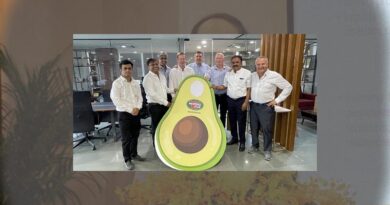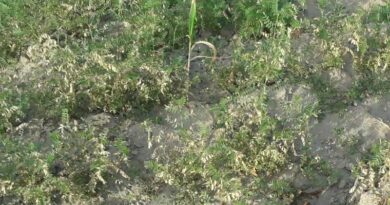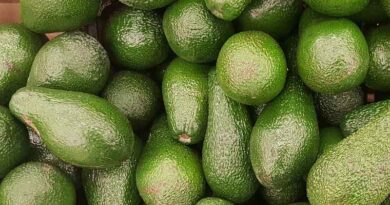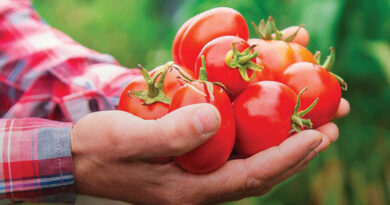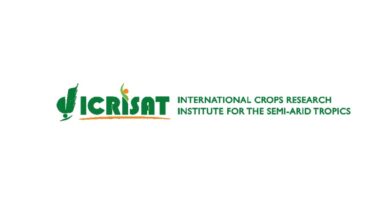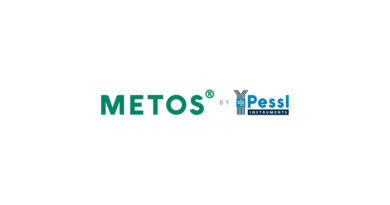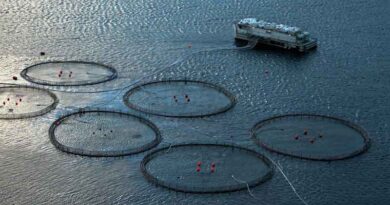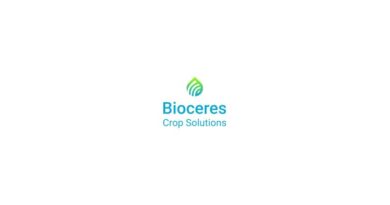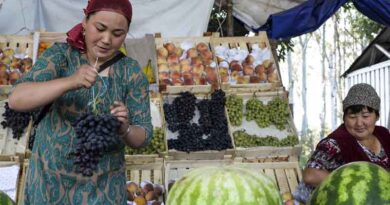Growing for Profit
11 May 2022, US: Avocados originate from Central America and have three distinct lines: Mexican, Guatemalan and West Indian. Avocado (Persea Americana) is an evergreen, sub-tropical tree belonging to the Lauraceae family. Varieties coming from the same line share similar characteristics, such as, higher salt resistance, cold resistance and so on. All of these characteristics have served as an adaptation to the environmental conditions that prevailed in their place of origin. It was when the first European settlers came to the Americas that the Avocado was brought out of Central America and was first cultivated in other parts of the world. It was only in the 20th century that the Avocado was introduced into the United States of America and today, it is cultivated all around the world in tropical, sub-tropical and Mediterranean climates.
Avocado is now cultivated in places like Southern Europe, South Africa and even semi-arid regions such as southern Israel. Taking avocado out of its natural environment necessitates ensuring it still receives its required water and nutrient needs.
Growing avocado outside the tropics without an irrigation system is simply impossible.
Climate Control: Two Birds with One Sprinkler
Growing avocados in new geographic areas with differing climate conditions, sometimes means exposing them to temperatures that are too high and/or too low. Avocado is very sensitive to frost damage. Using the correct Rivulis sprinkler (such as the Rivulis S2000) for frost protection in avocado is an excellent solution to protect against frost. In some applications the same climate control systems can even act as a cooling solution in hot areas and raise humidity levels substantially.
Plantation Design and Tree Density
In the past avocados were planted sparsely, between 200 – 300 trees per hectare. Recently, like many other plantation crops, there is a tendency to intensify and plant much denser. Many avocado plantations today are planted with 500 – 800 trees per hectare. The most intensively planted are 1600 trees per hectare. A plantation that dense, however, has certain repercussions.
Decades ago… Up until a couple of decades ago, avocado trees were left to grow big and wide. They could reach a height of over 5 meters, and have a canopy twice as wide. The yield per tree was indeed higher than today but the yield per hectare was lower. Furthermore, large trees made fruit picking much more difficult as they required special machinery.
Modern Avocado Plantations
4.5 – 6.0 meters between rows and 2.5 – 4.0 meters between trees
Today…
Today, the approach for modern avocado plantations is to keep the trees smaller so that the picking is easier and faster with no need for any special machinery. Tree spacing of 4.5 – 6.0 meters between rows and 2.5 – 4.0 meters between trees is common. The ultra-high-density approach is adopted in some areas but its superiority is inconclusive. An avocado plantation with 3.0 meters between rows and 2.0 meters between trees reaches full production very fast compared to a conventional plantation (3 – 4 years) and is reported to reach higher yields. However, tree density that high does not allow the use of heavy machinery which necessitates that all pruning, for example, must be done manually. This is a heavy toll on the grower.
Varieties and Pollination
There are many varieties of avocados. Some are similar and some are quite different from one another. Hass, Fuerta, Pinkerton and Reed are merely examples of the vast variety of avocado cultivars. Hass, being the most common of all avocado varieties, constitutes for over 80% of the world market. Most of the cultivated area of avocado worldwide consists of Hass.
Type A And Type B
A plantation, or even a plot, for that matter, comprised of Hass alone, could not sustain itself when it comes to fruit production. Even when the desired variety is Hass, another variety must be planted alongside it in order to properly pollinate it.
Avocado varieties are divided into 2 groups: Type A and Type B. Both of which are needed to pollinate one another.
The avocado flower contains both the male and female organs. Those organs do not “ripen” simultaneously. In Type A varieties, the female part of the flower becomes receptive at daybreak for only a few hours, while the male part of the flower is not active yet. Then, only in the afternoon of the next day, when the female part is inactive, the male part comes into action.
In Type B varieties, it is the male part of the flower that becomes active at daybreak while the female part is inactive. Hence, both Type A and Type B varieties must be intertwined.
Due to this unique reproductive mechanism and the fact that avocado flowers are not that attractive to bees, the use of beehives to help pollinate the flowers is intensive.
Hass – A Game of Pollination
Over the years, many different approaches were considered regarding the position and the ratio of the “pollinator” within the plot. It is now common, when planting a Hass plot, for example, to provide a pollinating variety every 3rd tree of every 3rd row (about 11% of the plot). That way, growers can plant most of their plot in the desired variety, in this case, Hass, and still achieve sufficient pollination that will ultimately lead to higher yields.
Fertilization
Avocado is considered a heavy consumer of nutrients. It is a fast-growing tree and, in some varieties, can yield over 30 tons of fruit per hectare every year. That means that a sufficient supply of nutrients is very important. Commonly, 300 kg of Nitrogen, 50 – 100 kg of Phosphorus and 300 kg of Potassium per hectare are applied each year. Some practices follow the method of leaf samples. This method relies on an annual analysis of leaves according to a specific sampling protocol. After collecting the leaves and sending them to a designated laboratory, an analysis of the mineral content is carried out. According to the mineral content in the leaves, the grower can adjust the fertilization program the following year. Below is an example of standard values of the major nutrients received by leaf samples. When the received values are in the adequate range, no adjustments are necessary and the usual recommended portion of fertilizers should be applied.
Water Management
Avocados are quite unique when it comes to water requirements. Avocados seem to not have roothairs, which as a result reduces their roots available surface area. Consequentially, any deviation of the environmental conditions in the root zone from the optimum potentially will have a much more severe effect on the plant. Since avocado roots have few to no root hairs, water uptake into the roots is relatively inefficient. As such, avocados need plentiful soil moisture to grow, but excess free soil water (defined as a state in which drainage is impeded leaving excess water and little air between the soil particles) suffocates roots and provides a medium for the zoospores of the root rot fungus Phytophthora cinnamomi to attack the roots. Even without the fungus, avocado roots will begin to die from the lack of oxygen after 48 hours of flooding.
Evidently, maintaining a correct balance between water and air in the root zone is crucial for avocados. Having an irrigation system, designed especially for that purpose can be a game changer. The ability to control the moisture and the minerals levels in the soil becomes “a must” to grow high grade profitable avocados. Developing an irrigation system that meets these unique, and sometimes demanding needs of avocados is an expertise that Rivulis has developed over decades. Another unique trait for avocado is that it has a very shallow root system. Most of the active roots are located in the top 20 – 30 cm of the soil. This physiological trait sort of dictates a specific irrigation technique. The roots of the avocado tree, if maintained properly, cover the topsoil and create a continuous net under the litter of fallen leaves. Therefore, the water distribution should be even and continuous as well. If the wetted areas are sporadic and in patches, the root system will not exploit 100% of the surface and therefore the uptake efficiency of water and minerals will be impaired, leading to a suboptimal operation that will affect the plantation’s ability to produce high yields for the long term.
Fertigation
Similar to other crops, avocado too benefits from a spoon-fed fertigation regime. Having the ability to carefully control the timing, the concentration and the specific type of fertilizer provided to the trees at any given time (with special attention at blossom and set up time) is indeed a powerful tool. Rivulis fertigation systems are recommended in order to achieve the highest yields possible.
Rivulis C9100 by pass high flow fertigation machines
(other models are available)
High flow adjustable dosing channels of up to 1,000 l/h.
An easy to operate controller with a multi language and intuitive interface.
Precise EC, PH control.
Product durability: made from high quality, industrial components.
A carefully designed irrigation system provides the exact same tool mentioned above. Together with the water requirements unique to avocados, the crucial need for nutrient availability and control dictates a well thought out design and implementation of the irrigation-fertigation system as a whole!
Avocado – A Worthwhile Investment
The global demand for avocado is still on the rise and new markets are opening. It is clear that this is one of the most profitable crops today. In some areas the avocado is called “the green gold” for the substantial profit it brings. When a certain crop can generate that kind of income, it is imperative to manage and conduct its cultivation to the highest degree in order to reach its full potential. The basics, in this case, are the water and nutrient delivery system. No short cuts should be taken when the return on the investment is that high. Rivulis offers growers the state-of-the-art products and services that are trusted for avocado production worldwide.
Irrigation Solutions
Sprinkler Irrigation Due to the unique traits mentioned regarding the root system of the avocado trees (shallow root system and root morphology), a sprinkler irrigation solution is often an excellent fit.
Drip Irrigation
The advantages of drip irrigation are well known, and drip irrigation is utilized increasingly all over the world. The ‘trick’ is properly applying it to avocado irrigation. The use of drip for avocado irrigation is becoming more and more common. When using drip irrigation for avocados, it is important to keep in mind all of the unique water requirements of this special crop. That being the case, some people use up to 4 laterals for each row, and usually no less than 2 with dripper spacing of 20 – 60 cm. Here are some of Rivulis’ recommended leading drip
D5000 PC & Hydro PC Drip Line
Pressure compensated to deliver uniform flow to every plant. The result better crop uniformity. Also enables use over sloping topographies and longer laterals.
Anti-siphon model (D5000 AS) available to reduce soil ingestion at shut off.
No-drain available (Hydro PCND) for pulse irrigation.
D5000 PC is the world’s most advanced drip line, using the latest technology to provide outstanding clog protection.
HydroPC has over 20 year heritage that makes it trusted the world over for reliable irrigation, season after season. The cylindrical dripper includes 2 outlets for additional redundancy.
The Complete Rivulis Solution
Maximize your irrigation system
Management
Manna Irrigation Intelligence uses satellite technology coupled with hyperlocal weather data to provide specific irrigation recommendations.
Pre-install
-Rivulis hydraulic design services delivers agronomic results while considering the most efficient total cost of ownership
-Rivulis agronomic advice with decades of experience
Install – More than just drip lines
Rivulis primary filtration & valves
-Generally housed in the pump shed
-Provide filtration and control for the entire system
-Use Rivulis automatic filtration and metal valves for hassle-free operation
Rivulis secondary filtration & valves
-Your in-field filtration backup and control of individual blocks
-Use Rivulis semi-automatic filtration combined with Rivulis plastic valves
-Ensure you incorporate Rivulis air-valves to allow air-discharge and to prevent vacuum at shutdown
Innovative dual-system
Some of the most advanced avocado plantations are installing a dual system.
-Drip System: 2 x drip line laterals per row to provide water and nutrients efficiently (Rivulis D5000 PC or HydroPC drip line), with the addition of ..
-Over Head Sprinkler System: For both cooling and frost protection. (Rivulis S2000, Rondo, Super XL)


